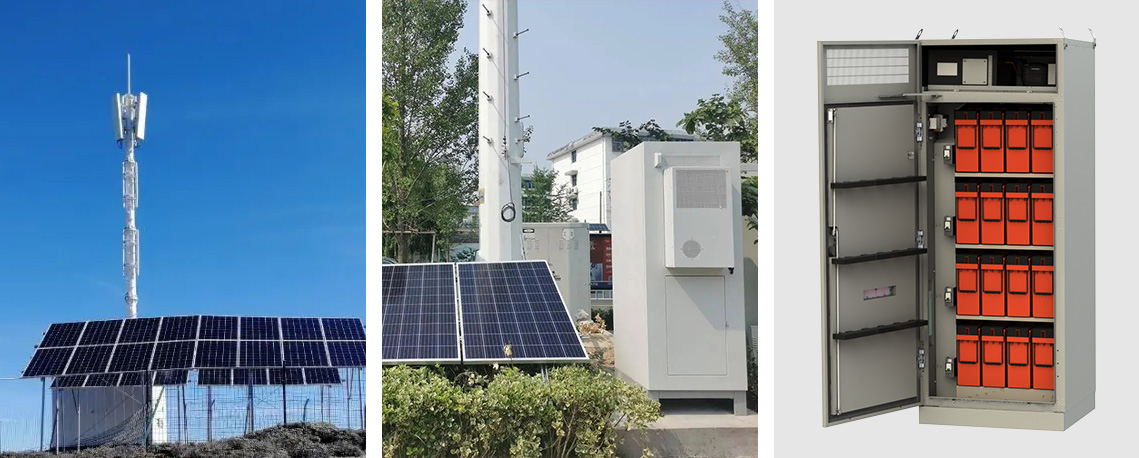Mobile Solar Tower Backup Power Supply

Battery application in 5G
The arrival of 5G era switch on new revolution, in which the worldwide infrastructure of cellular towers and wire lines shall run at another optimal level.
The coverage and updates of wireless communication devices are growing day by day.
It is now essential and vital to install reliable and efficient telecom battery systems that guarantee reserve or backup power when the grid is not reachable or unstable.
Base Station Advanced 5G wireless communication technologies is coming. First of all, the mobile cellular base station must be non-stop running all the way, the power supply should keep stable, so a energy storage battery system is very important for telecom 5G application.
The telecommunication landscape is evolving, and JB lead-acid batteries and lithium-ion battery cells for sale are well-evolved and grow with it. With world-class battery technologies and integrated power systems, our telecom power batteries can keep your network powered.
The arrival of 5G era switch on new revolution, in which the worldwide infrastructure of cellular towers and wire lines shall run at another optimal level. The coverage and updates of wireless communication devices are growing day by day. It is now essential and vital to install reliable and efficient telecom battery systems that guarantee reserve or backup power when the grid is not reachable or unstable. JB Battery 48V management system(BMS) is the right choice.
Network-based communications
These situations and others can be managed if the UPS has SNMP capability, allowing it to interface with major network management systems. SNMP, a standard protocol, is part of the Transmission Control Protocol/Internet Protocol (TCP/IP) suite. An SNMP UPS becomes an intelligent, network-connected device capable of transmitting management variables across enterprise-wide networks and the Internet. The UPS can log events, continuously monitor power quality, report on battery status, load and temperature, perform self-diagnostics and store the collected information into a management information base (MIB). Users’ operating systems can then use SNMP management software to collect and display MIB information in an easily-understood format.
Once available, the information can be used for a variety of control and management functions, which all improve the UPS system’s ability to provide uninterrupted, protected power. Auto shutdown of supported computers locally or across a network during a power failure is particularly important. This is most commonly achieved using Remote Control Command (RCCMD), a software solution available for many different operating systems. After a preset battery time following a power failure, monitoring software – which can be resident in either a PC or an SNMP adapter card – transmits an RCCMD shutdown signal. Remote RCCMD clients respond by initiating their own shutdown procedure.
Intelligence in the design can be used for phased shutdown of equipment across a site. Less-essential devices can be shut down first, decreasing the UPS battery load and maximising the critical equipment’s backup time. Sections of a system can also be isolated for security reasons. The UPS and network system can thus be tuned for optimum responses to power outages, but provision must also be made for issues within the UPS itself – especially on remote sites or outside of office hours without local manning.

Battery For Mobile Cellular Base Station
Remote monitoring and battery priority
Under these circumstances a remote monitoring solution offers the expertise and resources necessary to keep the UPS running. A remote monitoring installation on a user’s site communicates constantly with the UPS, automatically detecting any alarm or error messages. If an incident is detected, the service automatically emails a status message and any fault details to the provider’s service centre. Trained specialists can then interrogate and manage the UPS, perform all necessary remote diagnostics and if appropriate send a repair technician to the site.
Battery integrity is core to secure UPS power, so a UPS communications system should include provision for battery monitoring and status reporting. For example, a solution like this can check the internal resistance, temperature and voltage of every battery sequentially. Through an Equalisation process, the system corrects the charging voltage operating range, preventing gassing, dry-out and thermal runaway. Warnings are provided when attention is required.
We have seen why communication is essential to secure UPS operation, and how modern networking and Internet technology is used to provide solutions to meet today’s system complexities. These can include remote monitoring setups for sites that are sometimes or always without manning. Special provision should also be made for monitoring and maintaining the UPS batteries on which the system depends.
Types of Battery Used in Telecom
Shouldering the responsibility of carrying out various communication services, telecom systems always need reliable battery backup systems to support themselves. At present, there are mainly two types of telecom power batteries - lead-acid battery and Li-ion battery.
Though the majority of the telecom battery systems still use lead-acid batteries, especially the valve-regulated ones, out of the economical concerns, the telecom lithium battery has some undeniable technical merits that cannot be replaced by the lead-acid telecommunication battery.
Have higher energy density, the lithium telecom power batteries are usually lighter and more compact. Thus, they are extremely suitable for telecom battery systems that are required to be small and lightweight. Moreover, the telecom lithium battery also has a longer life span than the lead-acid ones, which can actually save the cost of telecommunication battery backup systems in long term.
JB Battery offers a wide range of batteries for critical power systems in the telecom industry, we offer the latest and safest energy battery system the telecom base operating.

 English
English Português
Português 日本語
日本語 Español
Español Pусский
Pусский Deutsch
Deutsch 한국어
한국어 العربية
العربية Français
Français Tiếng Việt
Tiếng Việt Italiano
Italiano